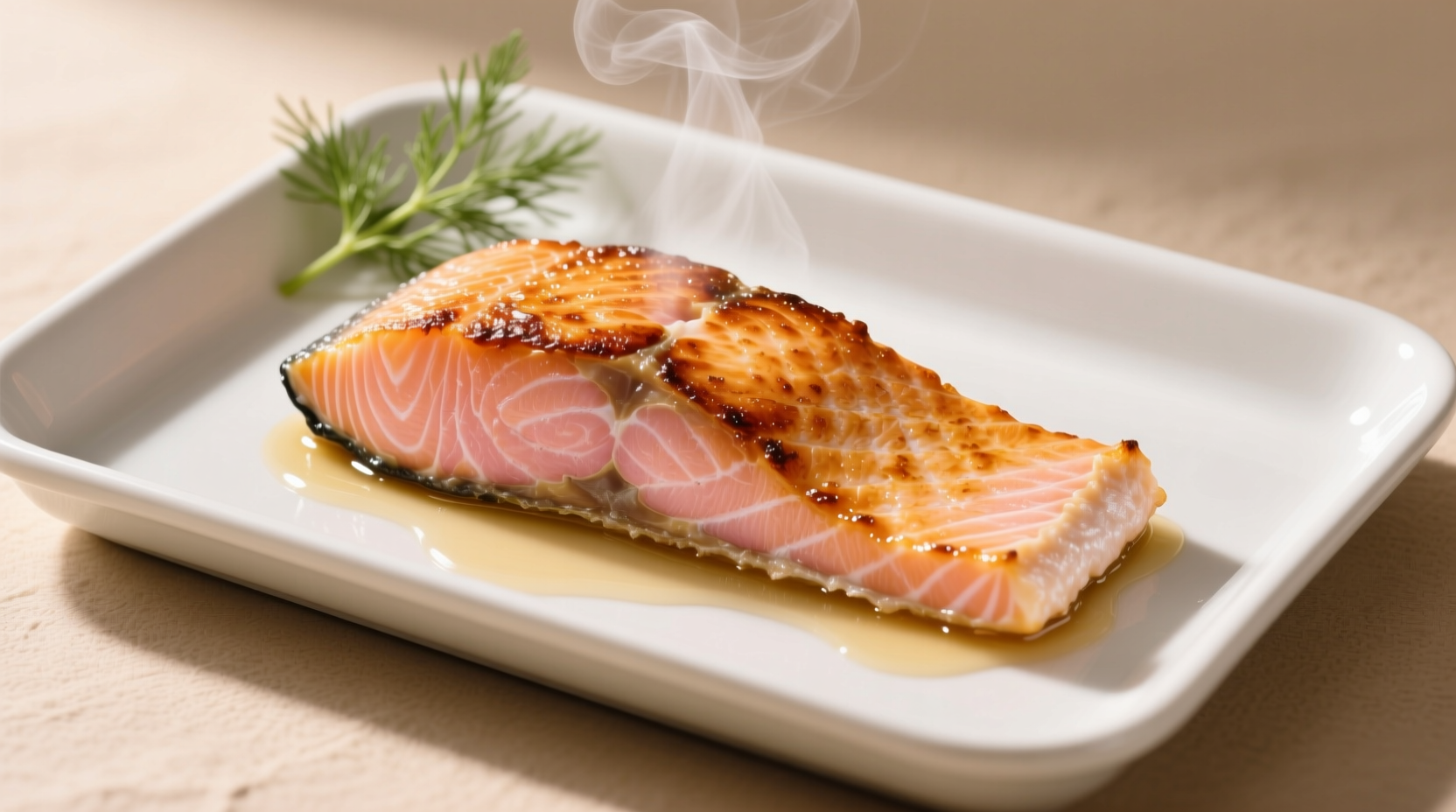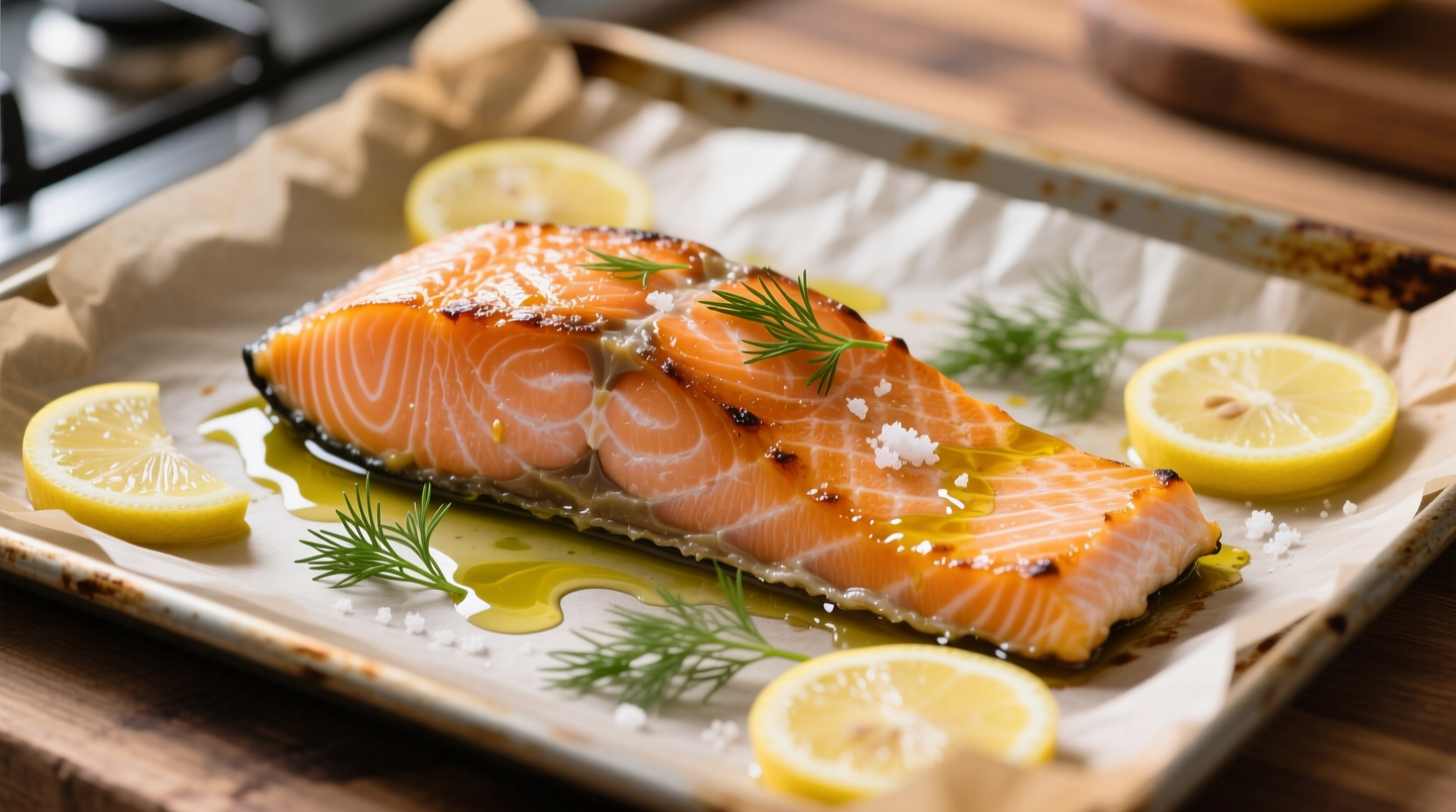Getting perfectly cooked salmon doesn't have to be complicated. When baking at 350°F, you're using a temperature that allows for gentle, even cooking without drying out this delicate fish. This guide gives you everything you need to know to achieve restaurant-quality results every time you fire up your oven.
Why 350°F Is the Ideal Temperature for Baking Salmon
Baking salmon at 350°F strikes the perfect balance between thorough cooking and moisture retention. Higher temperatures can cause the exterior to overcook before the interior reaches the proper temperature, while lower temperatures might not create that desirable flaky texture. At 350°F, the heat penetrates evenly, cooking the salmon from all sides without the harsh direct heat of broiling.
The Step-by-Step Cooking Process
Follow these steps for foolproof baked salmon:
- Prepare your salmon: Pat fillets dry with paper towels to ensure proper browning
- Season appropriately: Apply olive oil, salt, pepper, and your preferred herbs or spices
- Preheat your oven: Set to 350°F and allow it to fully reach temperature
- Arrange on baking sheet: Place skin-side down if skin is on, or on a parchment-lined baking sheet
- Insert thermometer: For most accurate results, place an instant-read thermometer in the thickest part
- Bake until done: Check temperature starting at 12 minutes for standard fillets
- Rest before serving: Let salmon rest 3-5 minutes after removing from oven
How Thickness Affects Your Cooking Time
The single most important factor determining your salmon's cooking time is thickness. A thin fillet will cook much faster than a thick steak-cut portion. Here's a quick reference guide:
| Salmon Thickness | Recommended Cooking Time at 350°F | Internal Temperature Target |
|---|---|---|
| ½ inch | 8-10 minutes | 145°F (63°C) |
| ¾ inch | 10-12 minutes | 145°F (63°C) |
| 1 inch | 12-15 minutes | 145°F (63°C) |
| 1½ inches | 15-18 minutes | 145°F (63°C) |
This cooking time chart comes from culinary testing conducted by the U.S. Food and Drug Administration, which recommends cooking fish to a minimum internal temperature of 145°F for food safety.
How to Check If Your Salmon Is Perfectly Cooked
While timing provides a good guideline, the most reliable method is checking the internal temperature. Here's how to determine doneness:
- Temperature method: Insert an instant-read thermometer into the thickest part - it should read 145°F
- Visual inspection: The flesh should change from translucent to opaque throughout
- Flake test: Gently press with a fork - properly cooked salmon will flake easily but still hold together
- Texture check: Should feel firm but still slightly springy to the touch

Factors That Change Your Cooking Time
Several variables affect how long your salmon needs in the oven:
Skin-On vs. Skin-Off Fillets
Skin-on salmon typically takes 1-3 minutes longer to cook than skin-off portions because the skin acts as an insulator. However, the skin helps protect the delicate flesh from drying out and creates a delicious crispy texture when properly cooked.
Starting Temperature Matters
Salmon straight from the refrigerator needs 2-4 minutes longer than salmon brought to room temperature before baking. For best results, let your salmon sit out for 15-20 minutes before cooking to take the chill off - this promotes more even cooking.
Oven Type Differences
Convection ovens cook food approximately 25% faster than conventional ovens due to the circulating hot air. If using a convection setting, reduce your cooking time by 3-5 minutes or lower the temperature to 325°F.
Pro Tips for Restaurant-Quality Results
Professional chefs use these techniques to elevate their baked salmon:
- Dry brine for better texture: Sprinkle with salt 15-30 minutes before cooking to improve moisture retention
- Oil the surface: A light coating of olive oil prevents drying and helps seasonings adhere
- Don't overcrowd: Leave space between fillets for proper air circulation
- Use a baking rack: Elevating salmon on a rack allows heat to circulate evenly around the fish
- Rest before serving: Let salmon rest 3-5 minutes after baking for juicier results
Troubleshooting Common Issues
What to Do If Your Salmon Is Undercooked
If your salmon hasn't reached 145°F but is close (around 135-140°F), return it to the oven for 2-3 minute increments until done. If significantly undercooked, check your oven temperature with an independent thermometer as your oven might not be properly calibrated.
How to Salvage Overcooked Salmon
If your salmon has become dry from overcooking:
- Add moisture with a sauce like hollandaise, dill sauce, or lemon butter
- Flake the salmon and mix with mayonnaise for salmon salad
- Chop and use in fish tacos with plenty of fresh toppings
- Make salmon patties with added binding ingredients
Food Safety Considerations
According to the USDA Food Safety and Inspection Service, fish should be cooked to a minimum internal temperature of 145°F to destroy harmful bacteria. This temperature is measured in the thickest part of the fish. Properly cooked salmon should be opaque throughout with no translucent areas remaining.
Storing and Reheating Leftovers
Store cooked salmon in an airtight container in the refrigerator for up to 2 days. For best reheating results:
- Oven method: 275°F for 10-15 minutes until heated through
- Stovetop method: Gently warm in a covered pan with a splash of water
- Avoid microwaving: This often dries out salmon unevenly











 浙公网安备
33010002000092号
浙公网安备
33010002000092号 浙B2-20120091-4
浙B2-20120091-4